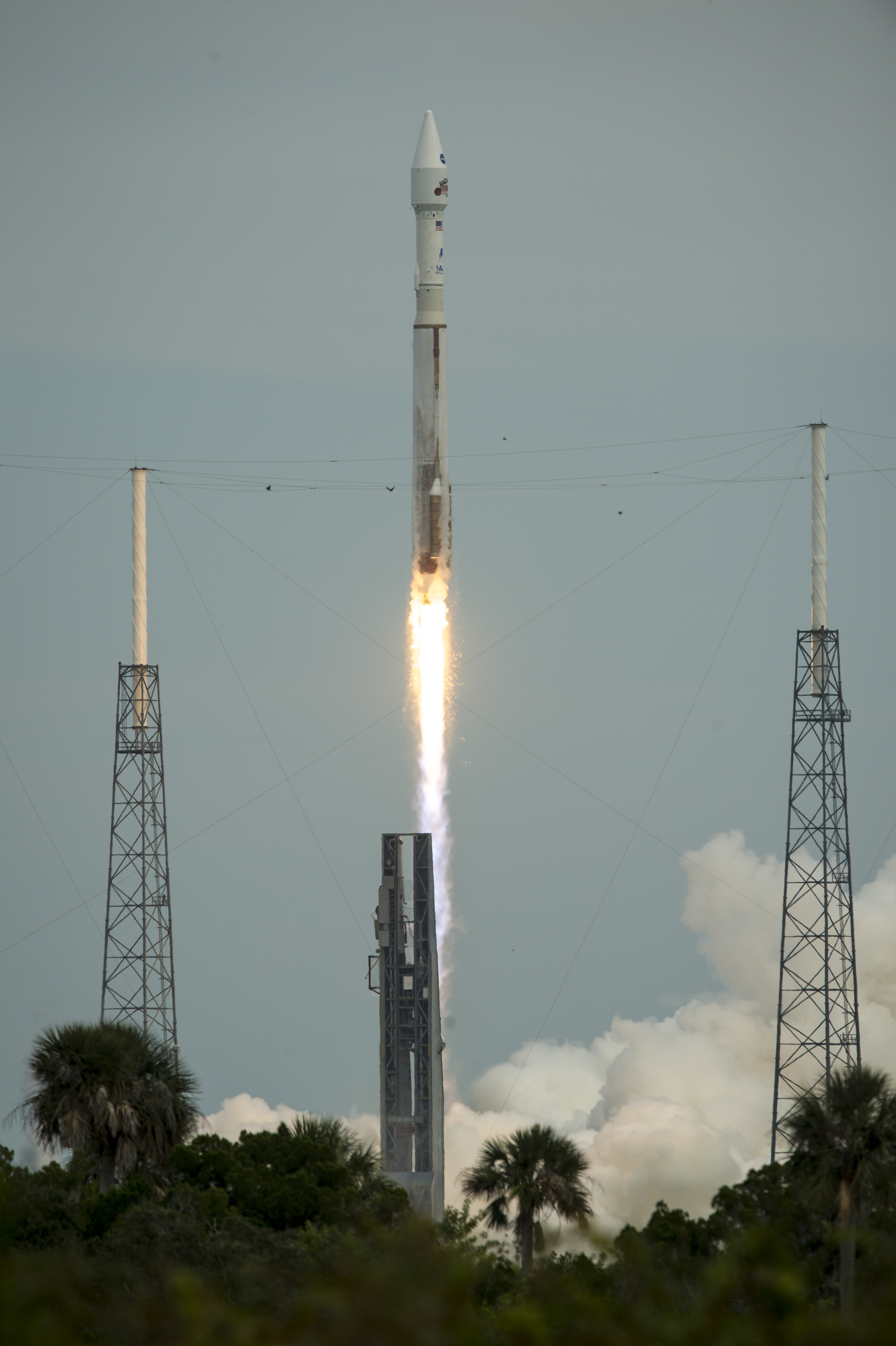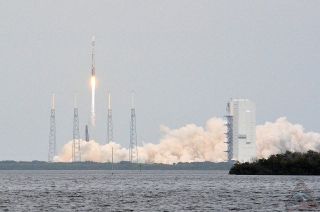'Picture-Perfect' Mars Probe Launch Has NASA Over the Moon

CAPE CANAVERAL, Fla. — Scientists and NASA officials are euphoric today (Nov. 18) after the smooth launch of the space agency's next Mars probe, which is now streaking toward a date with the Red Planet in September 2014.
The Atlas 5 rocket carrying the Mars Atmosphere and Volatile Evolution spacecraft (MAVEN) launched on time and in spectacular fashion from here at Cape Canaveral Air Force Station. The rocket roared to life at 1:28 p.m. EST (1828 GMT) today, leaving car alarms blaring in its wake. The MAVEN probe was released into space a little more than 50 minutes later.
Today's launch felt especially good for MAVEN principal investigator Bruce Jakosky, who has been working on the mission to study Mars' upper atmosphere for the past decade. [Photos from NASA's MAVEN Launch to Mars]
"After 10 years of doing this, I don't have the words to describe what I’m feeling," Jakosky, of the University of Colorado, Boulder's Laboratory for Atmospheric and Space Physics, told the press during a post-launch news conference today. "It's every possible emotion, but they're all positive. This is about the most exciting thing I can imagine happening, and this day has been picture-perfect from beginning to end."

Best wishes to MAVEN
Before launch, an astronaut in space wished MAVEN luck on its mission to the Red Planet.
"Understanding the Red Planet's atmosphere is essential to NASA's goal of safely sending humans there one day," NASA astronaut Mike Hopkins said from aboard the International Space Station. "From the International Space Station, best wishes for a fabulous mission."
Get the Space.com Newsletter
Breaking space news, the latest updates on rocket launches, skywatching events and more!
MAVEN is now on a 10-month journey to Mars, with arrival slated for Sept. 22, 2014. Once the probe gets into orbit around the Red Planet, it will peer deeply into the upper part of Mars' atmosphere from a highly elliptical orbit.
MAVEN is designed to try to solve the mystery of how the Red Planet lost its atmosphere to space by understanding the processes spurring the escape of volatile gases today. Scientists think that ancient Mars was probably a wet and warm world much like Earth, but the sun and other factors caused the planet to lose most of its atmosphere, turning the planet into a cold, dry desert.
"What a Monday at the office," David Mitchell, MAVEN project manager at NASA's Goddard Space Flight Center in Greenbelt, Md., said today. "You build something to go to Mars, and we're now flying to Mars today. Maybe I'm not showing it, but I'm euphoric."
Relay to Mars
Along with its eight scientific instruments, MAVEN also has the ability to help relay data from NASA's two currently operational Mars rovers — Opportunity and the 1-ton Curiosity rover — to their ground controllers on Earth.
NASA's Mars Reconnaissance Orbiter, Mars Odyssey and the European Space Agency's Mars Express are already active in orbit around Mars.
"MAVEN joins our orbiters and rovers already at Mars to explore yet another facet of the Red Planet and prepare for human missions there by the 2030s," NASA chief Charlie Bolden said in a statement. "This mission is part of an integrated and strategic exploration program that is uncovering the mysteries of the solar system and enabling us to reach farther destinations."
The Indian space agency's first mission to Mars — launched on Nov. 5 — could also join the other probes in orbit as soon as Sept. 24, 2014, two days after MAVEN is scheduled to arrive in orbit.
On time, under budget
Because MAVEN launched on time, the $671 million mission actually came in under budget, NASA officials said.
"It's my projection that they will be under," said Jim Green, NASA's planetary science division director. "We haven't paid all of the bills … In the long run, we do anticipate that they will be under budget. They certainly won't exceed their $671 million tab, and for that, we're grateful for it. What will happen next, of course, is how that funding — if there is any that's left — will be used within the program itself."
Visit SPACE.com for the latest MAVEN news, photos and videos. You can also follow MAVEN coverage through the Mission Status Center at SPACE.com's partner, Spaceflight Now.
Follow Miriam Kramer @mirikramer and Google+. Follow us @Spacedotcom, Facebook and Google+. Original article on SPACE.com.
Join our Space Forums to keep talking space on the latest missions, night sky and more! And if you have a news tip, correction or comment, let us know at: community@space.com.

Miriam Kramer joined Space.com as a Staff Writer in December 2012. Since then, she has floated in weightlessness on a zero-gravity flight, felt the pull of 4-Gs in a trainer aircraft and watched rockets soar into space from Florida and Virginia. She also served as Space.com's lead space entertainment reporter, and enjoys all aspects of space news, astronomy and commercial spaceflight. Miriam has also presented space stories during live interviews with Fox News and other TV and radio outlets. She originally hails from Knoxville, Tennessee where she and her family would take trips to dark spots on the outskirts of town to watch meteor showers every year. She loves to travel and one day hopes to see the northern lights in person. Miriam is currently a space reporter with Axios, writing the Axios Space newsletter. You can follow Miriam on Twitter.
Most Popular

